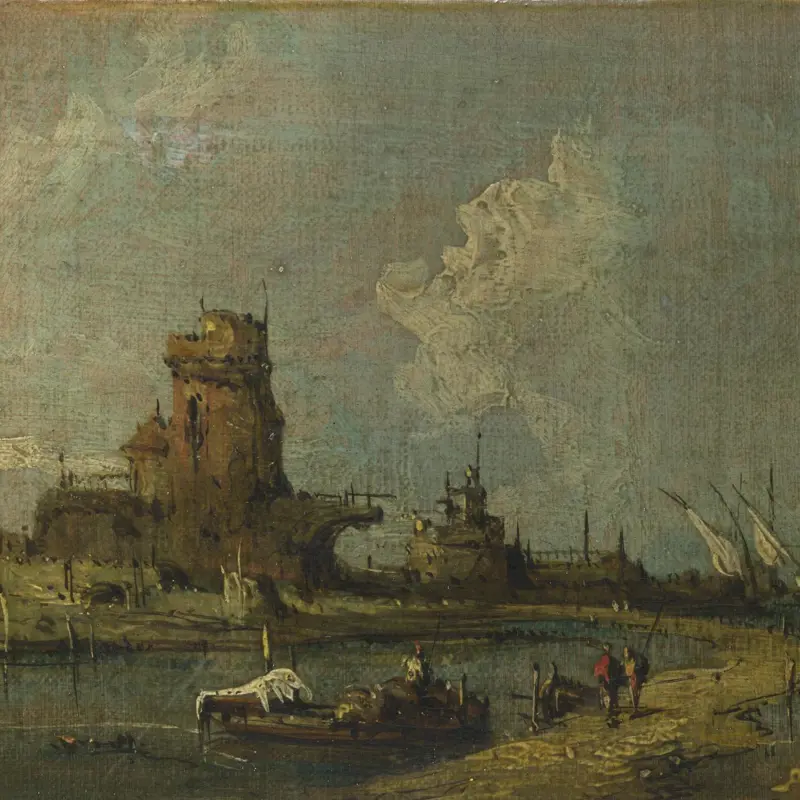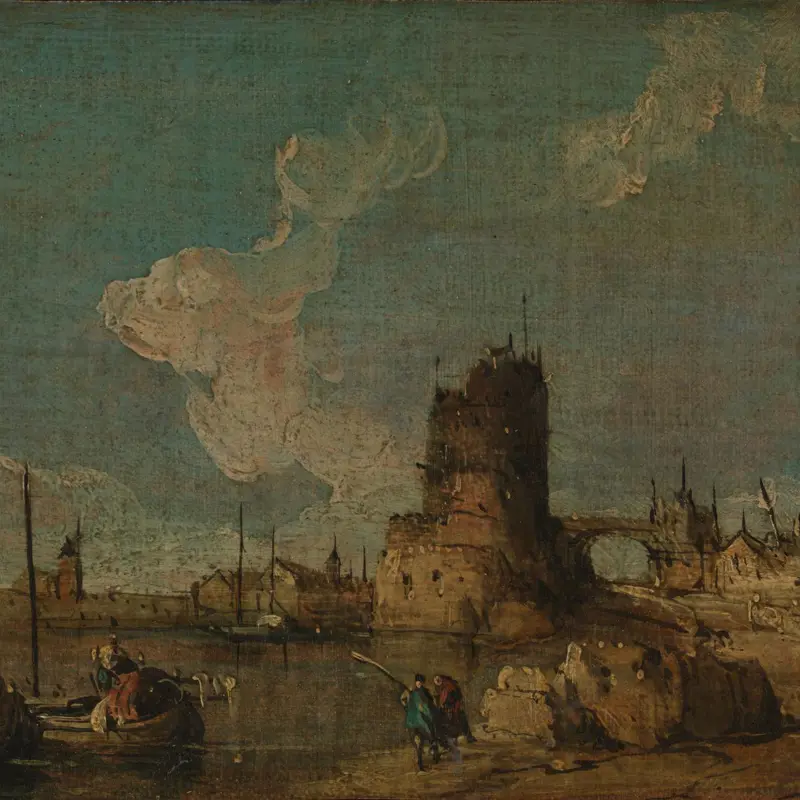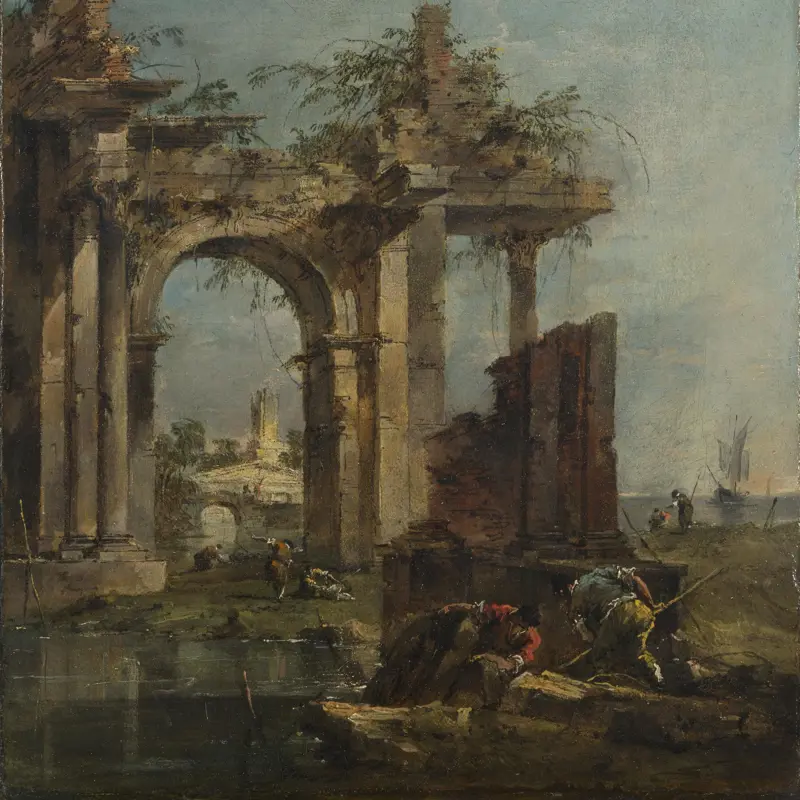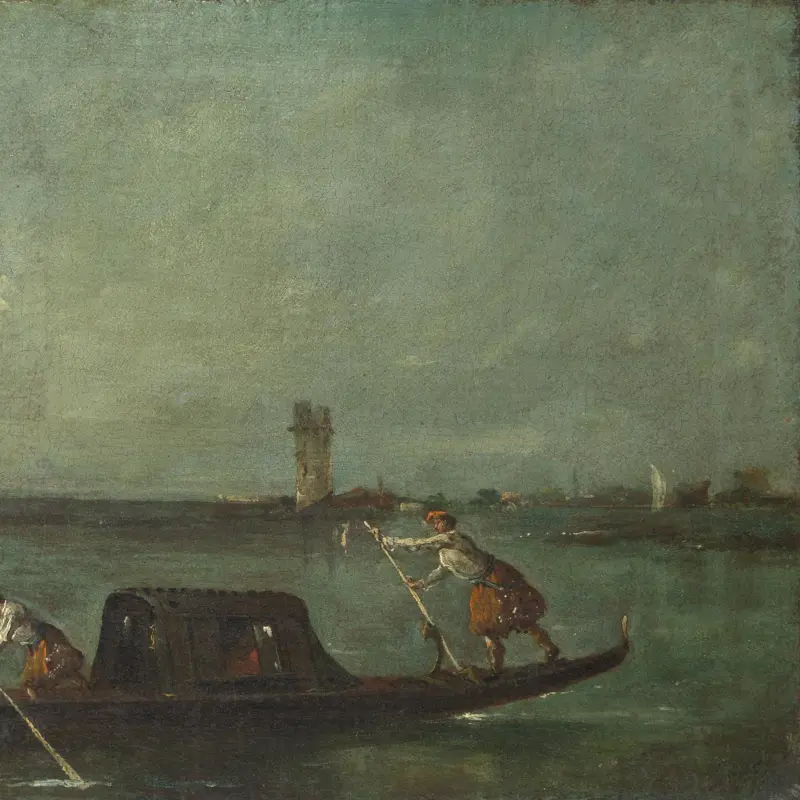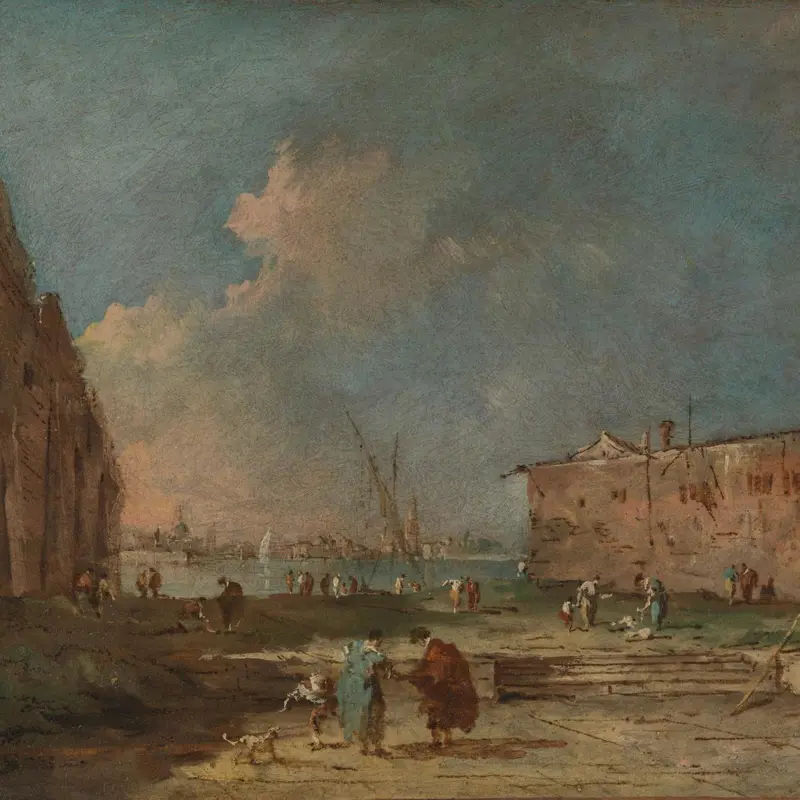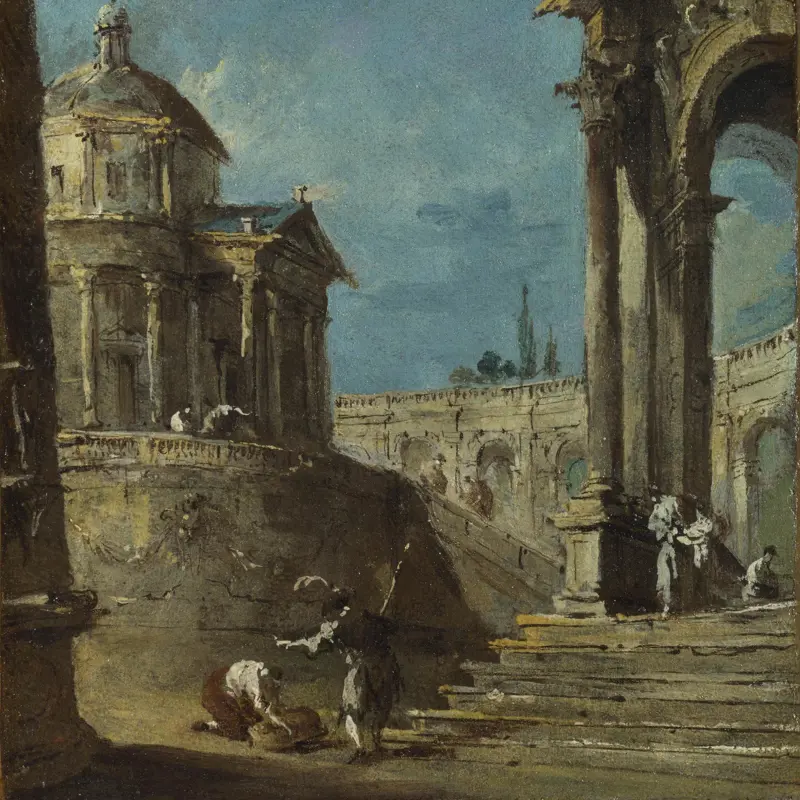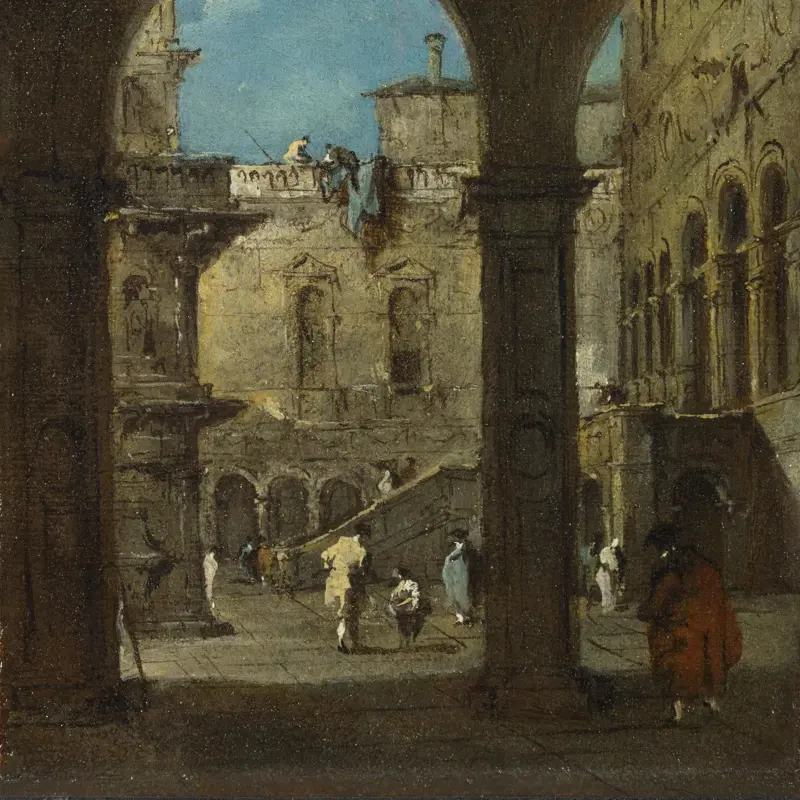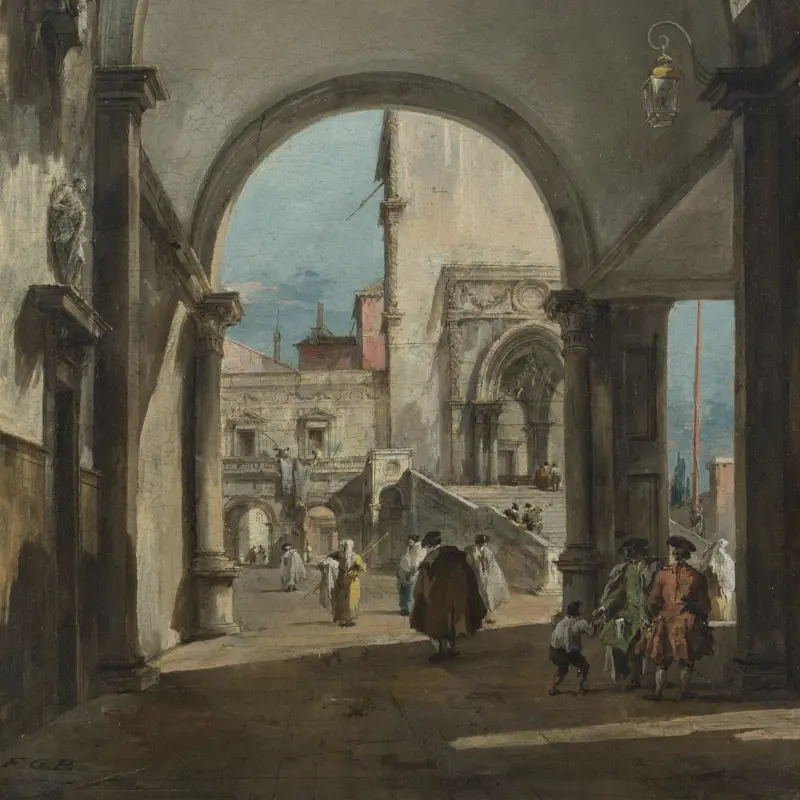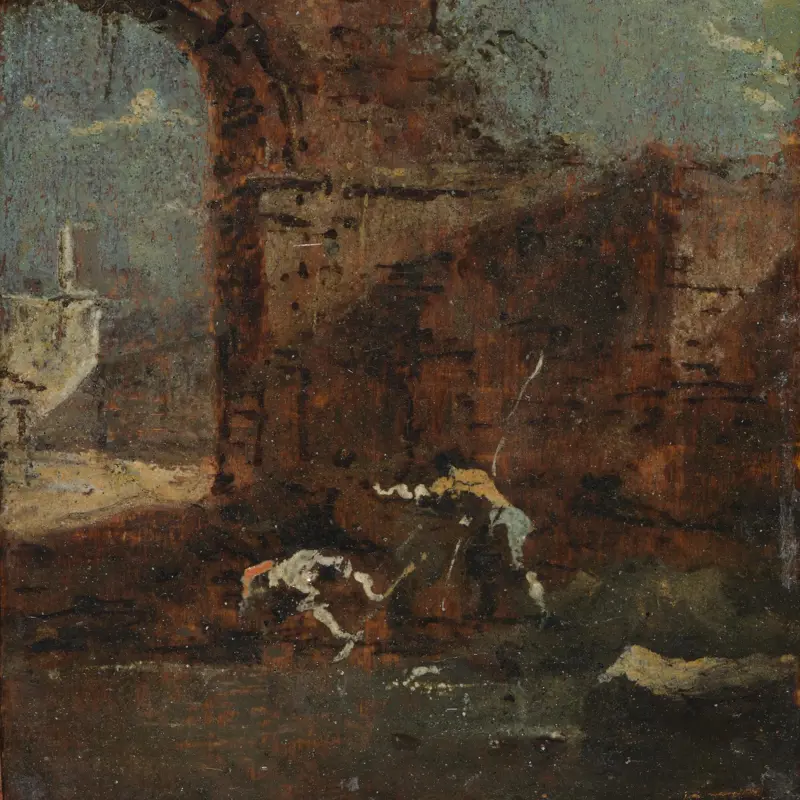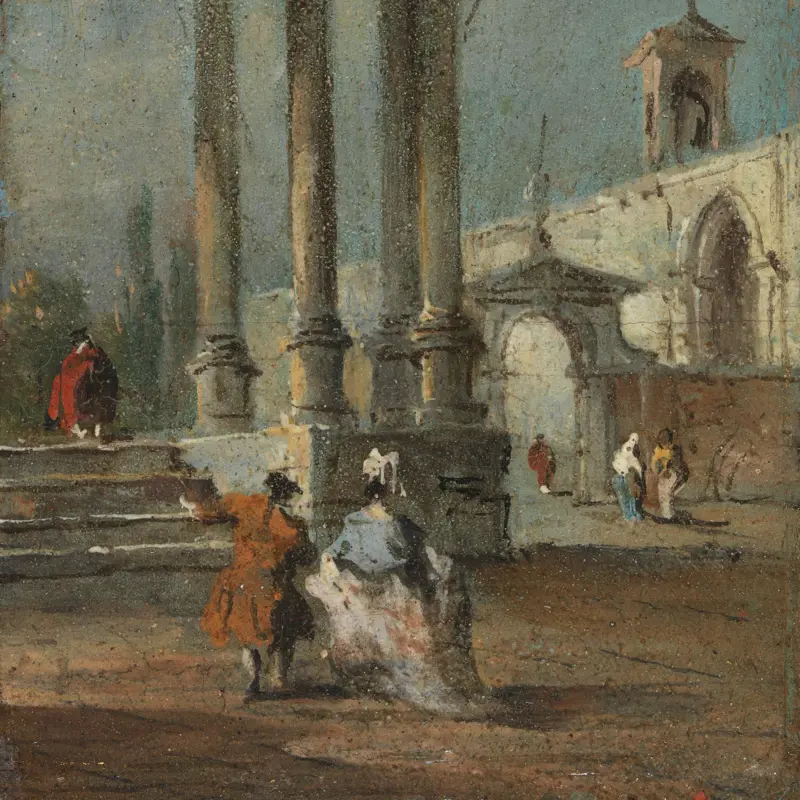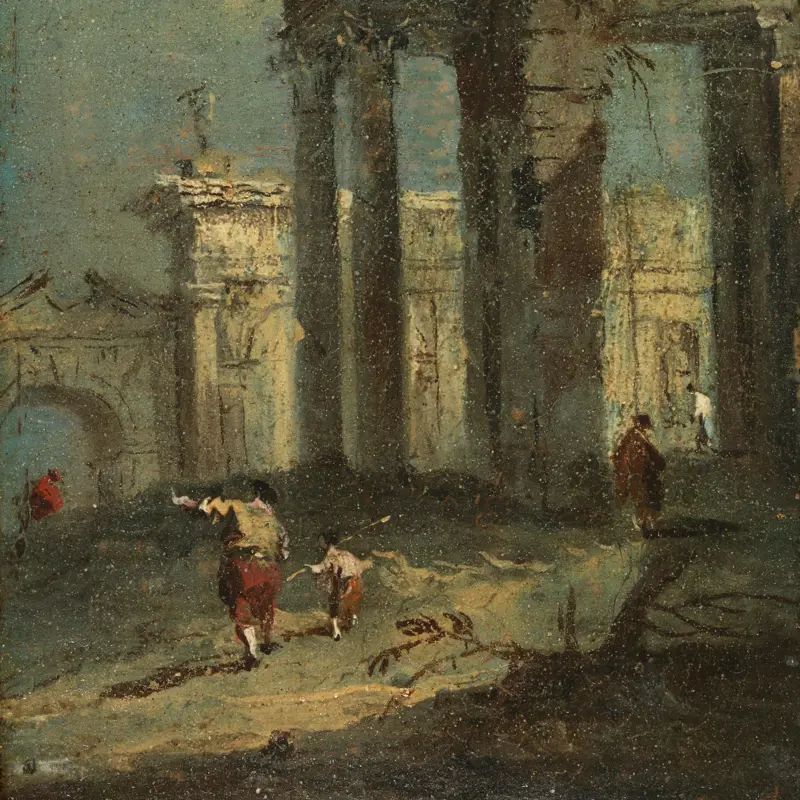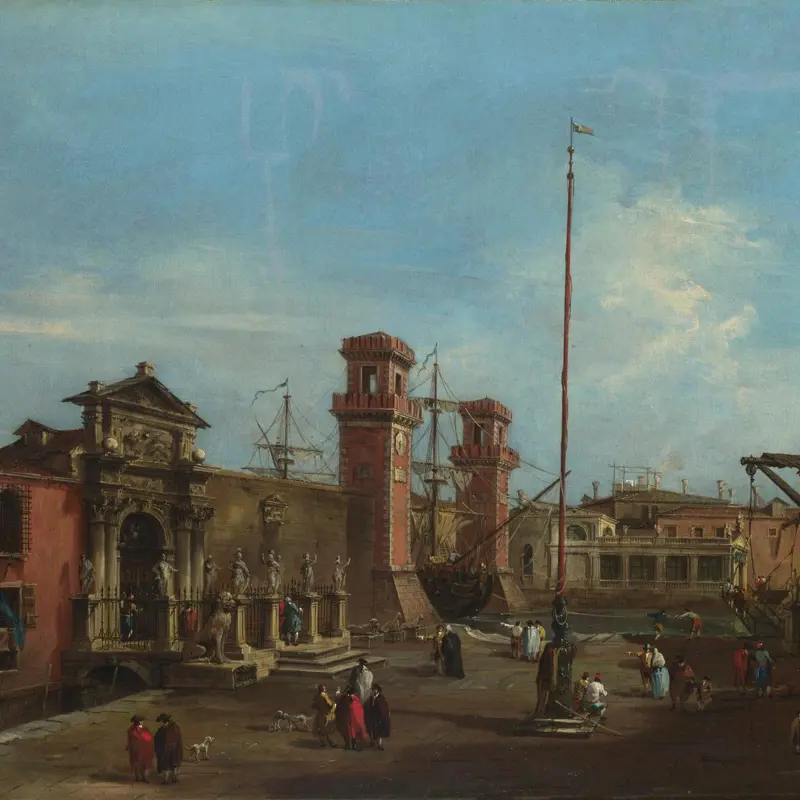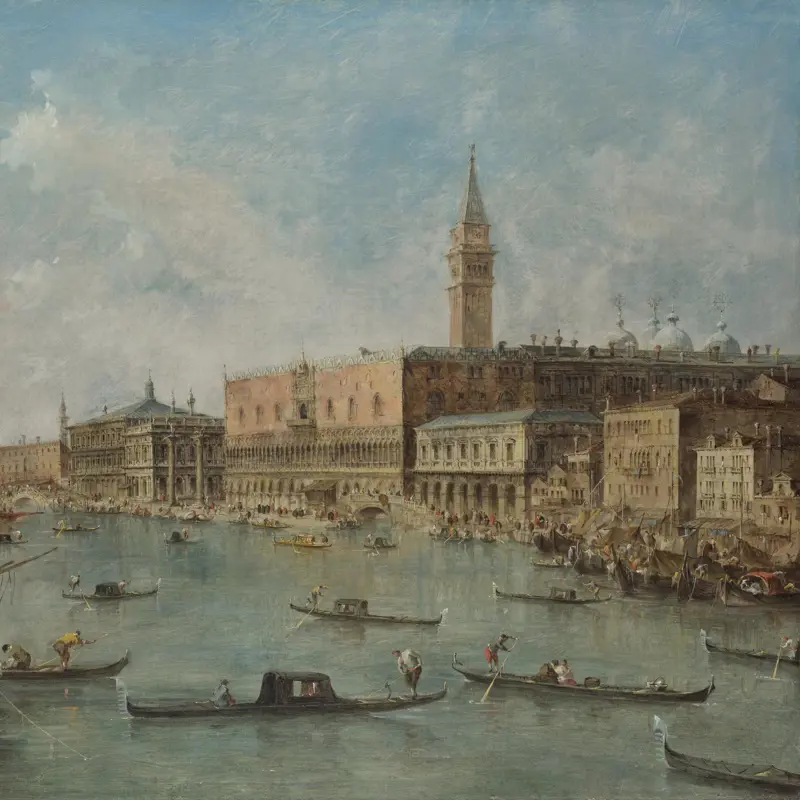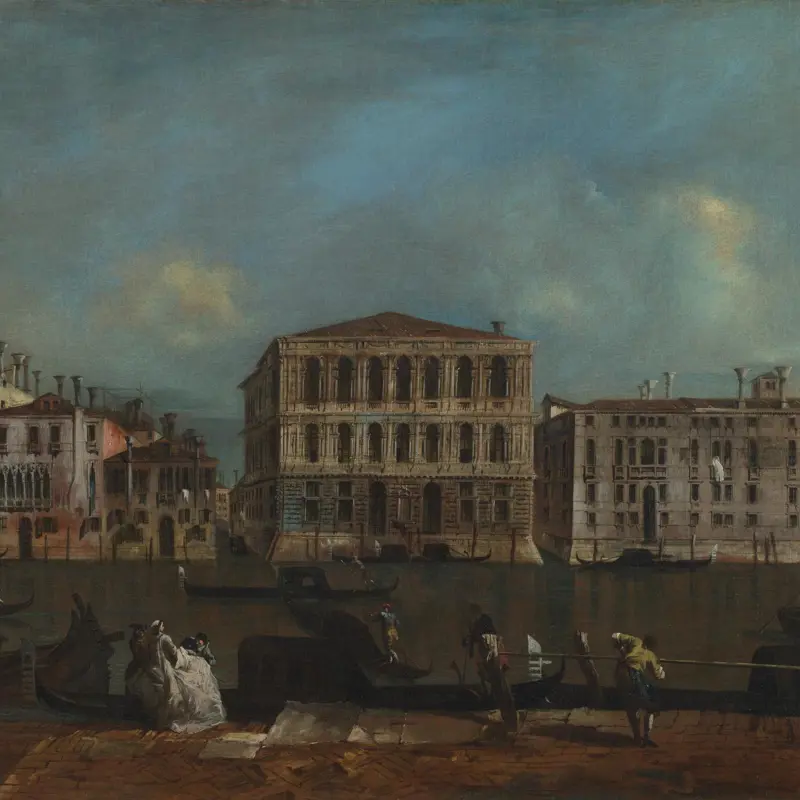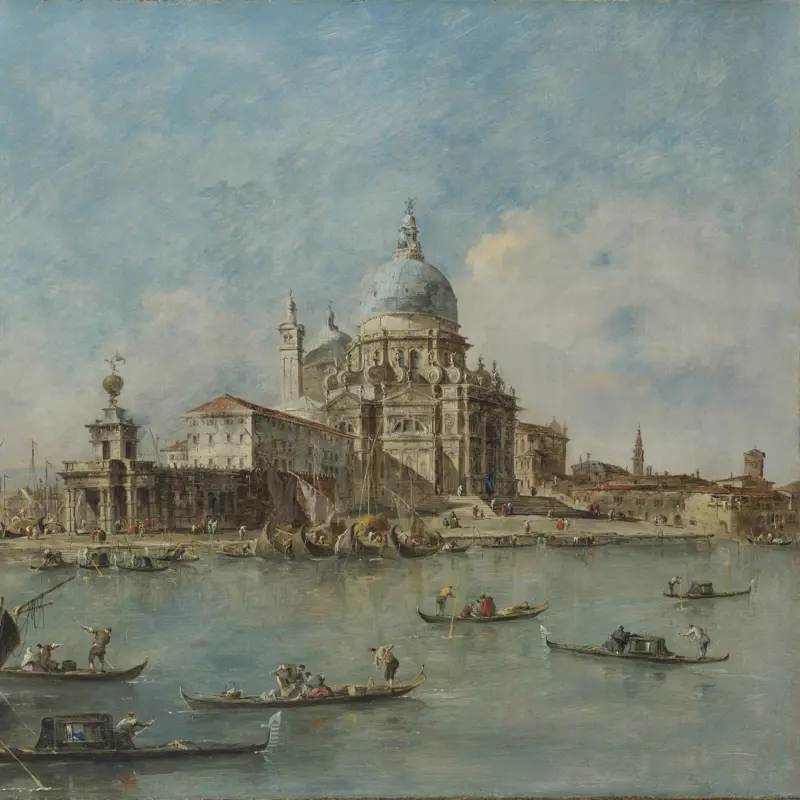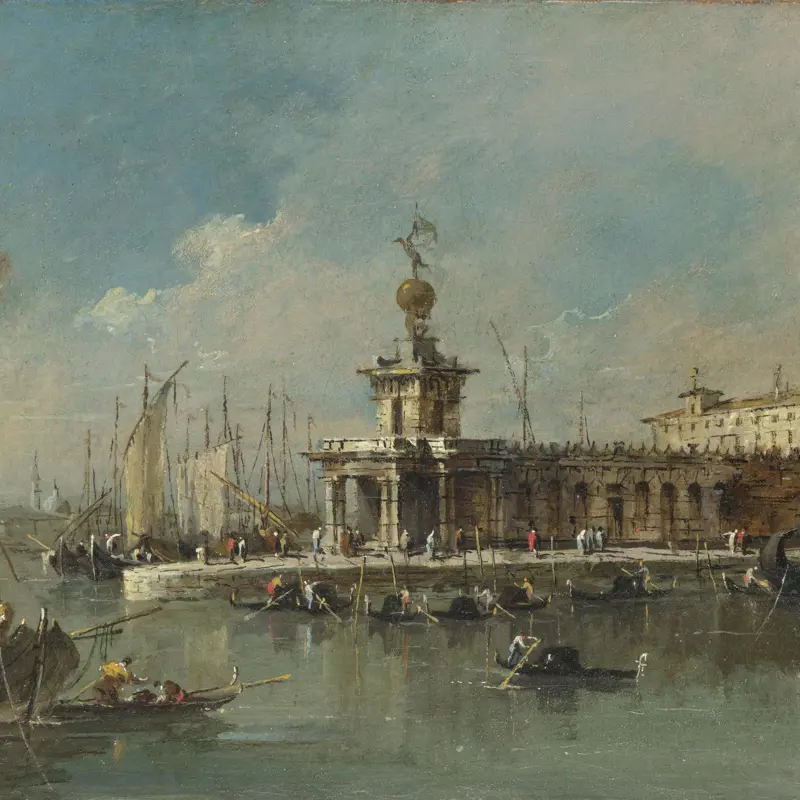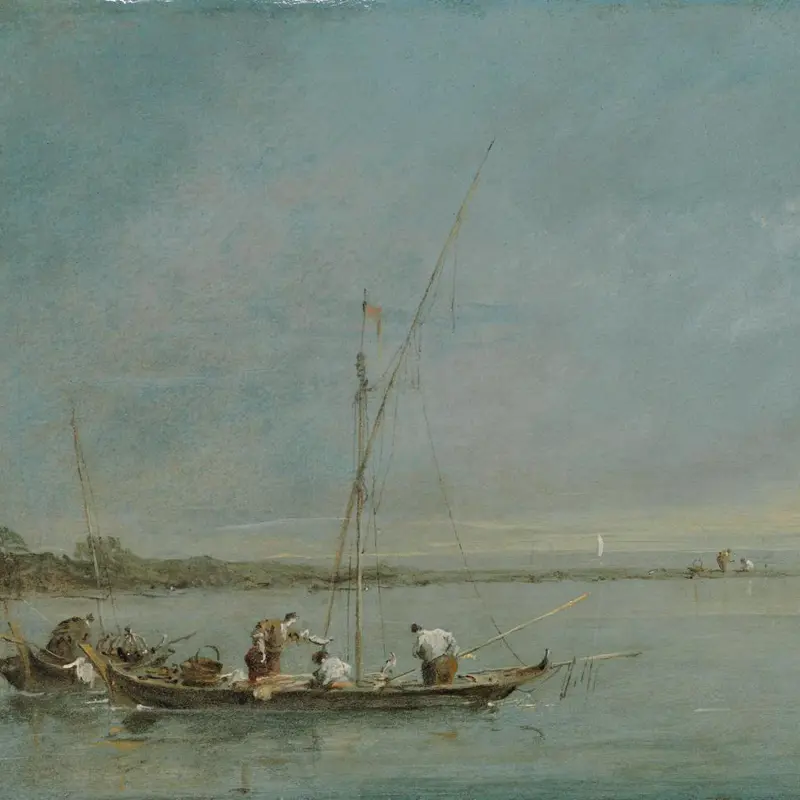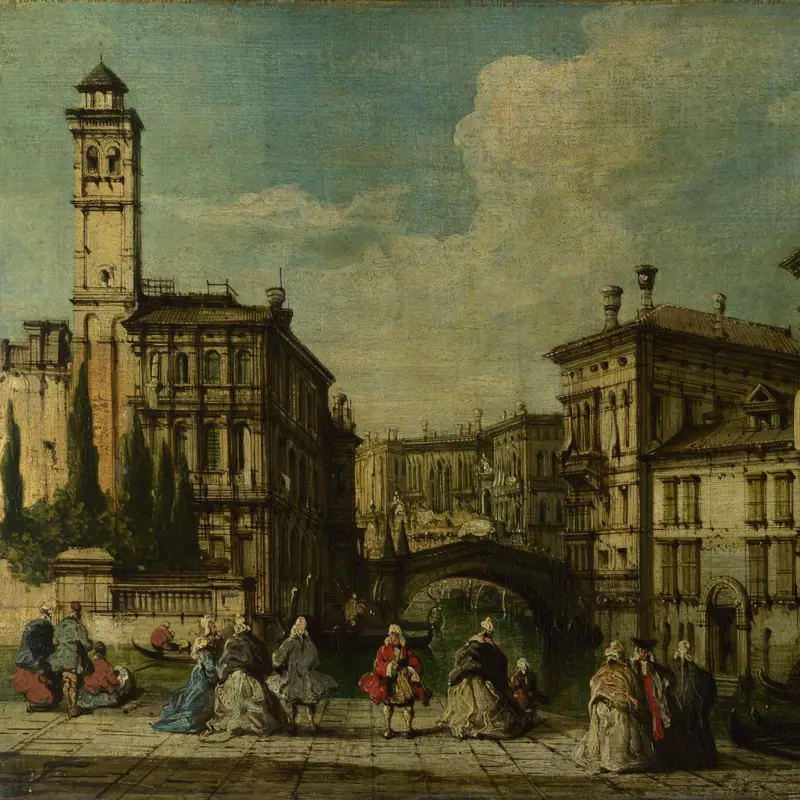Imitator of Francesco Guardi, 'A Ruin Caprice', 19th century
About the work
Overview
A fortified town sits at the edge of a peaceful lagoon – we see just a few boats and a handful of people. These boats may be carrying supplies to and from Venice; for centuries, the city had profited from strong trading routes with mainland Italy and across the Mediterranean. The foreground figures are dashed in with a few flicks of the brush, their movement bringing the scene to life.
We don't know who painted this small scene, but it has similarities to those created by Guardi. His imaginary views, known as capricci, were inspired by the areas surrounding his home city of Venice. This artist has used broad brushstrokes to describe cloud formations, and simple blocks of colour for the buildings and beach.
Key facts
Details
- Full title
- A Ruin Caprice
- Artist
- Imitator of Francesco Guardi
- Artist dates
- 1712 - 1793
- Part of the series
- Two Caprices of Ancient Ruins
- Date made
- 19th century
- Medium and support
- oil on canvas
- Dimensions
- 13.4 × 19.4 cm
- Acquisition credit
- Bequeathed by Lady Lindsay, 1912
- Inventory number
- NG2905
- Location
- Not on display
- Collection
- Main Collection
Provenance
Additional information
Text extracted from the ‘Provenance’ section of the catalogue entry in Michael Levey, ‘National Gallery Catalogues: The Seventeenth and Eighteenth Century Italian Schools’, London 1986; for further information, see the full catalogue entry.
Bibliography
-
1986Levey, Michael, National Gallery Catalogues: The Seventeenth and Eighteenth Century Italian Schools, London 1986
-
2001
C. Baker and T. Henry, The National Gallery: Complete Illustrated Catalogue, London 2001
About this record
If you know more about this work or have spotted an error, please contact us. Please note that exhibition histories are listed from 2009 onwards. Bibliographies may not be complete; more comprehensive information is available in the National Gallery Library.
Images
About the series: Two Caprices of Ancient Ruins
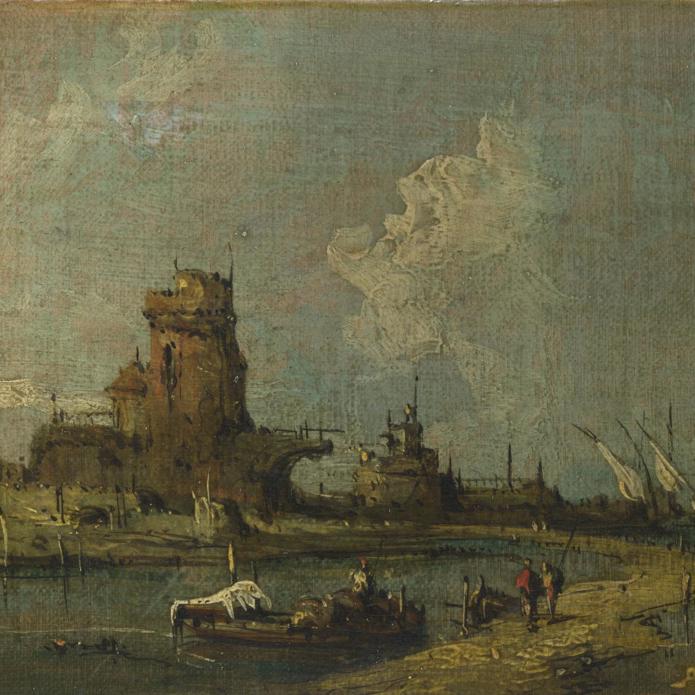
Overview
These two paintings, known as capricci, combine reality and fantasy: set in the Venetian lagoon, they show people, buildings and boats surrounded by invented ruins. The paintings were given to the National Gallery as genuine works by Guardi, but are now thought to be by a nineteenth-century imitator.
The varnish on both has become discoloured and the colours have darkened, Guardi’s stylistic influence is apparent in the thick paint that expresses cloud movement and the heavy outlines that define the landscape. Guardi painted numerous imaginary scenes inspired by his home city of Venice, where he lived and worked.

